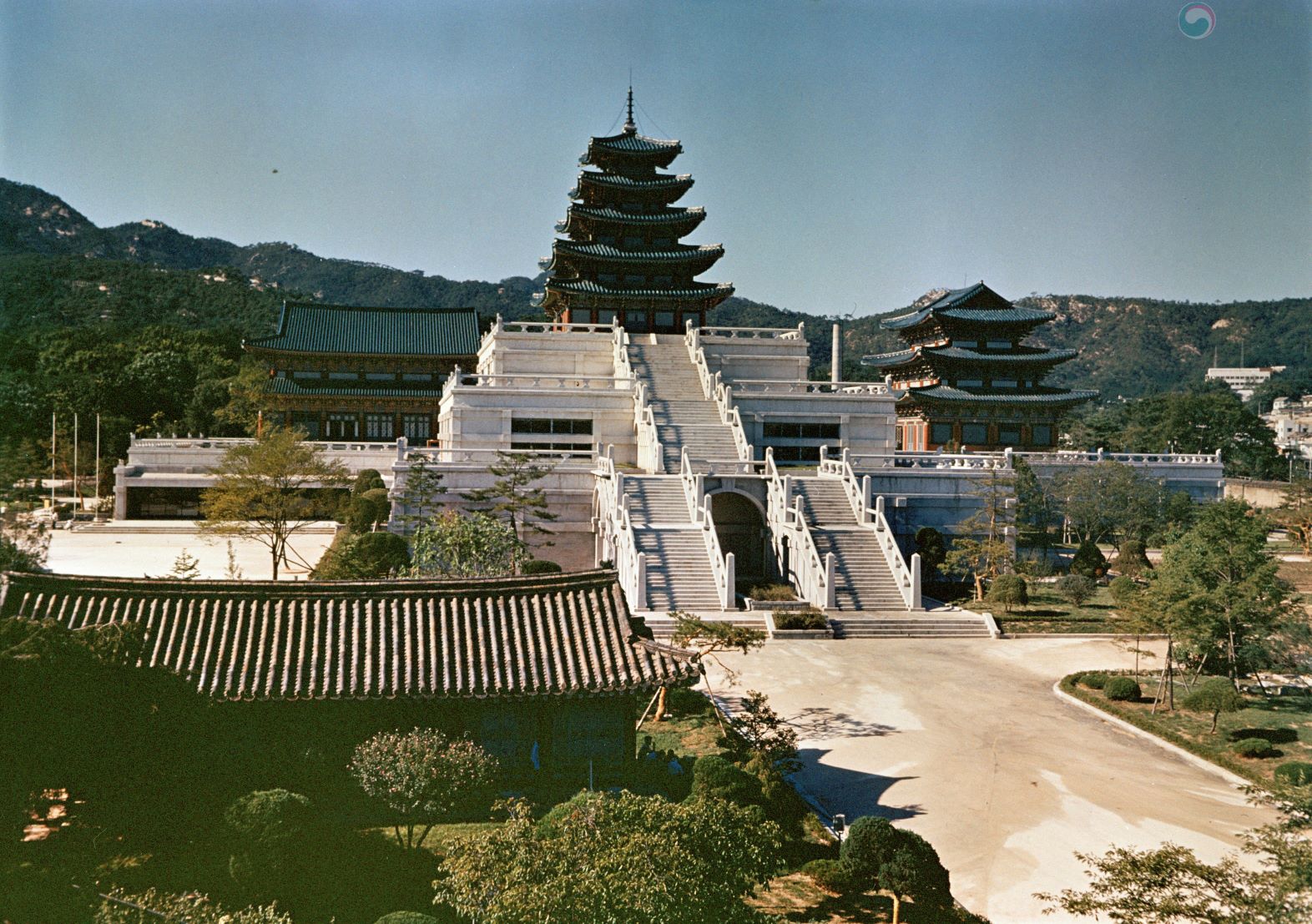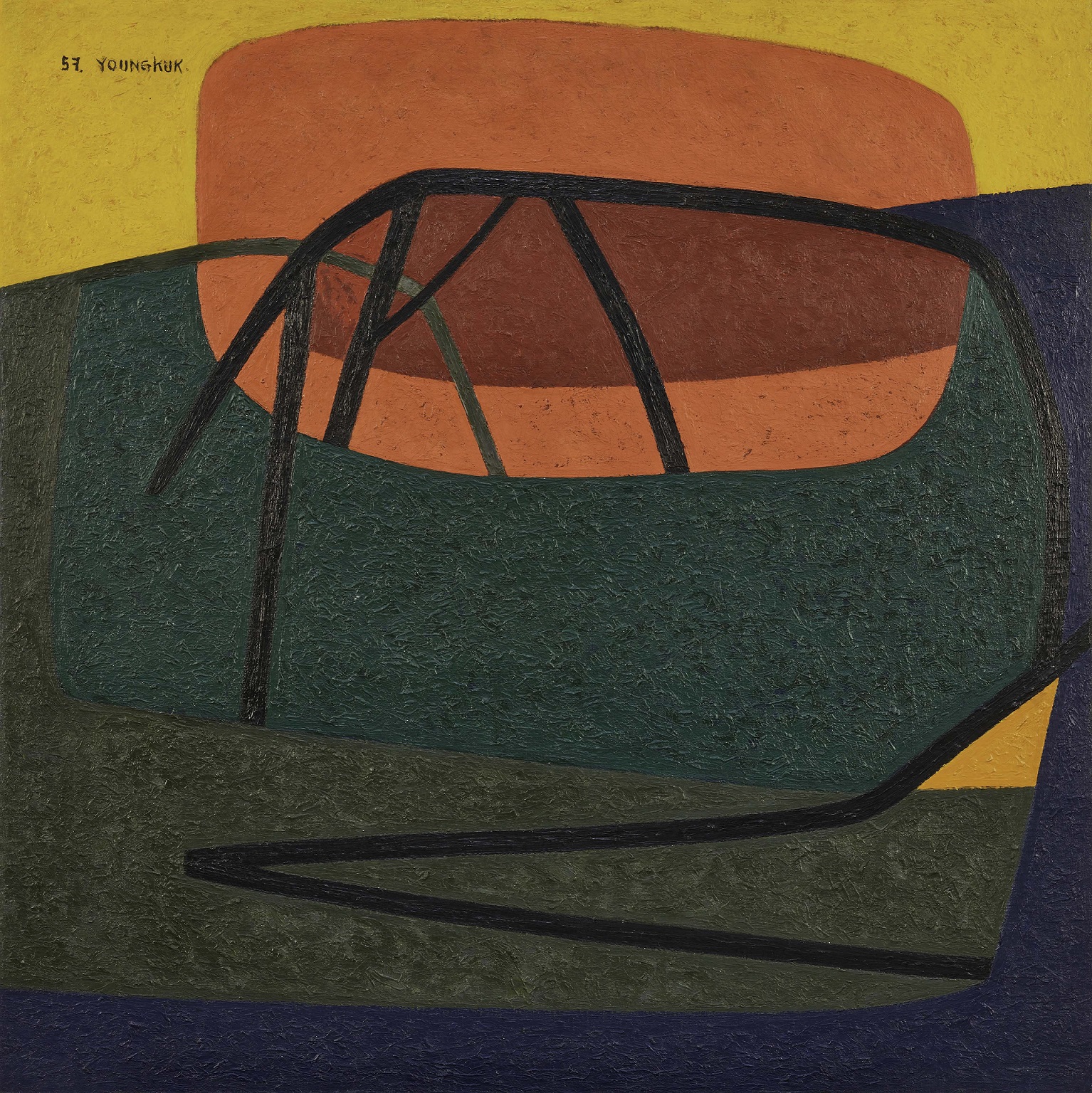
Special Exhibition of Modern Korean Painting
* Source: MMCA
Related
-

National Museum
The National Museum was established by the Korean government in 1945 after Independence. It consists of a general museum and a special museum. The National Museum of Korea as a general museum took over the Museum of the Japanese Government-General of Korea and opened at Gyeongbokgung Palace in 1945. It annexed the Gyeongju, Buyeo, Gongju, and Kaesong museums. It also annexed Song Seokha’s National Museum of Anthropology and accepted the collection of Deoksugung Museum of Art (former Yi Royal Family Museum) in 1969. The museum was called “National Museum” from 1945 to 1972, and the “National Museum, of Korea” after the reorganization in 1972. Meanwhile, local annex museums were upgraded to local national museums, such as Gyeongju National Museum and Buyeo National Museum. Since Independence, national museums have been constructed in many local cities, including Gyeongju, Buyeo, Gongju, Gwangju, Jinju, Cheongju, Jeonju, Daegu, Gimhae, Jeju, Chuncheon, Naju, and Iksan. These museums play pivotal roles in maintaining local histories and cultures. Special museums within the National Museum of Korea include the National Palace Museum (the history and culture of the Joseon Dynasty), the Maritime Museum (maritime culture), the Forest Museum, the Diplomatic Museum, the Police Museum, the Custom Museum, the Lighthouse Museum, the Postal Museum, and the Museum of Korean Traditional Music.
-

Chung Kyu
Chung Kyu (1923-1971) was born in Goseong, Gangwon-do. He graduated from Gyeonggi Public Commercial School in 1941 and moved to Japan to attend the Department of Western Painting at Teikoku Art School. He returned to Korea in 1944 and stayed in Busan during the Korean War, moving to Seoul to be a researcher at the Korean Visual Art Research Institute from 1954 to 1962. He studied prints and ceramics in Rochester, New York, USA on a one-year invitation from the Rockefeller Foundation. After he came back, he expanded his art from painting to prints and ceramics. He was a founding member of the Korea Art Critics Association in 1956, the Korea Prints Association [Hanguk panhwa hyeophoe] in 1958, and the Korean Art Critics Association in 1960. He established the Institute of Korean Traditional Ceramics Craft in 1960. He contributed his prints to the Contemporary Art Exhibit sponsored by Chosun Ilbo and created ceramic murals at Oyang Building and Namsan Liberty Center, leaving an important mark on the development of public art in Korea. He worked as an art lecturer at Ewha Woman’s University from 1955 to 1961, at the department of craft, Hongik University from 1960 to 1963, and as a professor of the Department of Ceramics at Kyung Hee University from 1963 to 1971.
-

Lee Kyungsung
Lee Kyungsung (1919-2009, pen name Seoknam) was born in Incheon as the first son of Lee Hak-soon and Jin Bo-bae. He graduated from Changyeong Elementary School (1926-31) and Gyeongseong Commercial School (1934-36). In 1937, he moved to Japan and graduated from the Department of Law at Waseda University in 1941. After his return to Korea, he worked as a clerk at the Gyeongseong Court. Later, he returned to Japan to study art history at Weseda University. After independence, he was appointed as the first director of the Incheon City Museum, a director of Hongik University Museum, Walker Hill Art Center (1981-83), and the MMCA (1981-83, 1986-92). He strived to improve the structure of Korean art museums and also trained professional curators. During his appointment as a professor at Ewha Womans University (1957-60) and Hongik University (1961-81), he also served as a chair of the Korean Art Critics Association and published several important books that contributed to the foundation of a modern Korean art history. He established the Seoknam Art Culture Foundation in 1989 and the Seoknam awards for art and art theory. After his retirement, he focused on his art and held numerous solo exhibitions.
Find More
-
Lee Kyusang
Lee Kyusang (1918-1967) was born in Seoul, the son of a wealthy furniture merchant. He graduated from Whimoon High School and moved to Japan. He submitted his abstract works to the Geukyeonsa coterie exhibition in 1937 and the Exhibition of Jiyu Bijutsuka Kyokai in 1939. In 1941, he attended the Department of Painting at Nihon Art School in Japan, but it is not clear if he graduated. After independence, he participated in the New Realism Group Inaugural Exhibition in 1948, the Contemporary Art Exhibit sponsored by Chosun Ilbo in 1957, and from 1959 to 1963. He taught art at Kyungbok High School and was appointed as an associate professor at Hongik University in 1961. Lee Kyusang was one of Korea's early abstract artists. He consistently focused on abstract art while his colleagues, such as Kim Whanki and Yoo Youngkuk, switched to semi-abstraction. In the 1950s, he incorporated religious symbols, such as a transformed cross, into his work after he converted to Catholicism, as a means to create simple yet profound pieces of work.
-

Yoo Youngkuk
Yoo Youngkuk (1916-2002) was born in Uljin, Gyeongsangbuk-do. He graduated from Uljin Elementary School and attended Gyeongseon Teachers College from 1931 to 1934. He moved to Japan in 1935 and graduated from the Tokyo Culture School in 1938. He submitted his work to the Yanghwa Art Coterie Exhibition and won a grand prize for his radical and avant-garde constructive abstract art in the Free Artists Association Exhibition in 1938. He was then recommended as a new member. After independence, he participated in the New Realism Group Exhibition, the Modern Art Association Exhibition, the 1950 Art Association [Osimnyeon misul hyeophoe] Exhibition, the Contemporary Art Exhibit sponsored by Chosun Ilbo, and Sinsanghoe. He worked as an art professor at Seoul National University from 1948 to 1950 and at Hongik University from 1966 to 1970. He was one of the first abstract artists in Korea. While in Japan he pursued the creation of an absolute form of abstraction. Then, back in Korea after independence, he switched to using constructive and emotional color in his abstract compositions to represent the sublime character of nature.
-

Park Sookeun
Park Sookeun (1914-1965) graduated from Yanggu Elementary School and was a self-taught artist. In 1932, he began his career when he was selected for the 11th Joseon Art Exhibition [Joseon misul jeollamhoe], an event which he would subsequently be chosen for eight times. He founded Juhohoe (1940-1944) in Pyongyang with Choi Youngrim and Chang Reesouk. His work earned a special award for the second National Art Exhibition (Gukjeon) in 1953 and he became a Noteworthy Artist at the National Art Exhibition in 1959 and a judge in 1962. Park Sookeun’s works in the 1940s portrayed the humble lives of Koreans or somewhat resigned scenes of everyday life. After the Korean War, he often used thick gray lines to draw such work, often featuring subjects such trees, girls, and women. His work utilized various techniques, such as the elimination of shadow, emphasized outlines, or thickly daubed colors applied with a granite-like finish. In the 1960s, his unique expressive technique developed further, and enabled him to subtly capture Korean sensibilities through scenes of the everyday lives of girls and mothers in Korea. Park Sookeun excelled in describing the lives and sensibilities of ordinary Koreans.






